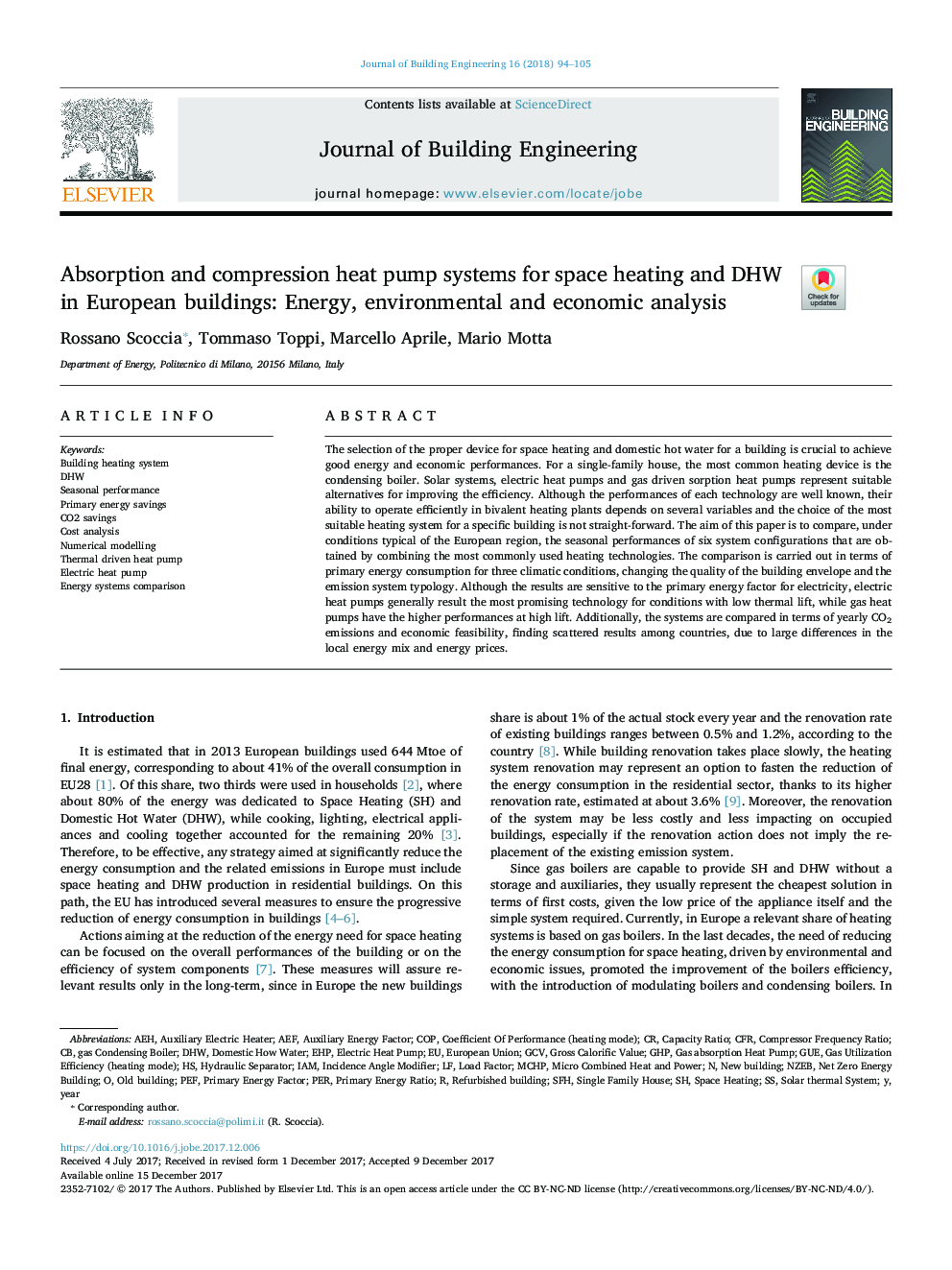| Article ID | Journal | Published Year | Pages | File Type |
|---|---|---|---|---|
| 6749969 | Journal of Building Engineering | 2018 | 12 Pages |
Abstract
The selection of the proper device for space heating and domestic hot water for a building is crucial to achieve good energy and economic performances. For a single-family house, the most common heating device is the condensing boiler. Solar systems, electric heat pumps and gas driven sorption heat pumps represent suitable alternatives for improving the efficiency. Although the performances of each technology are well known, their ability to operate efficiently in bivalent heating plants depends on several variables and the choice of the most suitable heating system for a specific building is not straight-forward. The aim of this paper is to compare, under conditions typical of the European region, the seasonal performances of six system configurations that are obtained by combining the most commonly used heating technologies. The comparison is carried out in terms of primary energy consumption for three climatic conditions, changing the quality of the building envelope and the emission system typology. Although the results are sensitive to the primary energy factor for electricity, electric heat pumps generally result the most promising technology for conditions with low thermal lift, while gas heat pumps have the higher performances at high lift. Additionally, the systems are compared in terms of yearly CO2 emissions and economic feasibility, finding scattered results among countries, due to large differences in the local energy mix and energy prices.
Keywords
MCHPCOPBuilding heating systemCFRCO2 savingsGCVGHPPEFSFHnZEBGUEAEFEHPDHWEuropean UnionGross calorific valueCost analysisNet zero energy buildingSingle family houseperyearSolar thermal systemPrimary energy savingsLoad factorSeasonal performanceprimary energy factorNumerical modellingAEHIAMMicro combined heat and powerPrimary energy ratioIncidence angle modifierElectric heat pumpSpace heating
Related Topics
Physical Sciences and Engineering
Engineering
Civil and Structural Engineering
Authors
Rossano Scoccia, Tommaso Toppi, Marcello Aprile, Mario Motta,
